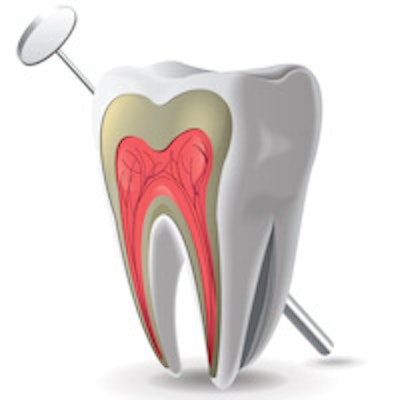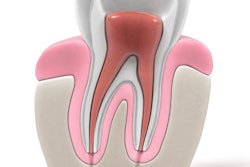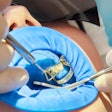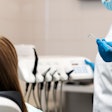
When you perform a root canal, do you worry about your patient being at risk for a systemic disease such as infective endocarditis or even a stroke because of infection after the procedure? According to a study in PLOS One, it's a concern, but there are ways to minimize the risk.
We know that Streptococcus mutans is a major pathogen for dental caries and infective endocarditis. However, there's not much clinical information whether S. mutans is present in dental pulp tissue, and, if so, how much. This is a concern because the presence of S. mutans could contribute to stroke and various systemic diseases, such as infective endocarditis, according to the researchers from Japan.
"Our results suggest that two collagen-binding proteins (CBP)-positive S. mutans strains exhibit high colonization in dental pulp. This could be a possible virulence factor for various systemic diseases," the authors wrote (PLOS One, July 21, 2016).
Focus on proteins
To measure if S. mutans is present in dental pulp tissue, the researchers studied root canal specimens in 64 children and adolescents (up to 20 years old) who visited the Osaka University Dental Hospital from February 2013 to September 2014. The children received root canal treatment under local anesthesia for severe childhood caries (49), trauma (12), or fracture of the central cusp (3).
The researchers focused on collagen-binding proteins called Cnm and Cbm. These proteins have been shown to have a frequency of distribution in oral strains of up to 20%, and these proteins are also unique from other proteins because of their strong adhesion to collagenous tissue, the authors noted.
The researchers also investigated the pathogenicity of CBP-positive S. mutans strains in relation to human dental pulp fibroblast cells (HDPFs). They were able to isolate S. mutans strains from almost half (30 of 64) of the root canal specimens. They also found that the detection rate of S. mutans in inflamed dental pulp caused by development of dental caries was significantly higher than that in inflamed dental pulp caused by trauma (p < 0.001).
In addition, each of the Cnm-positive strains showed properties of adhesion to HDPFs at a rate greater than 2%, whereas all of those without the Cnm gene showed adhesion of less than 3%. The average rate of adhesion of the Cnm-positive strains was significantly higher than that of the Cnm-negative strains.
Chemical cleaning
Between 10% and 20% of S. mutans strains isolated from dental plaque, saliva, and inflamed pulp possessed collagen-binding protein on the bacterial cell surface, lead study author Ryota Nomura told DrBicuspid.com in an email interview. Nomura is an associate professor in the department of pediatric dentistry at the Osaka University Graduate School of Dentistry in Osaka, Japan.
"The CBP-positive S. mutans strains showed high adhesion properties to carious dentin and dental pulp fibroblast cells as compared to the widely distributed strains (CBP-negative S. mutans)," Nomura wrote. "So, CBP-positive S. mutans strains may be highly virulent in deep dental caries."
However, while these CBP-positive strains showed a high virulence in stroke or systemic diseases, there are effective methods for limiting this risk for patients, Nomura noted.
"The basic characteristics of the bacterium are not different compared to the normal CBP-negative strains," he wrote. "Thus, chemical cleaning solution for endodontic treatment or most of antibiotics are effective."



















